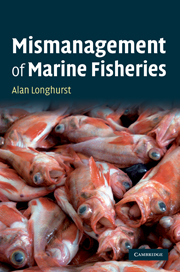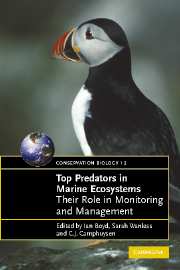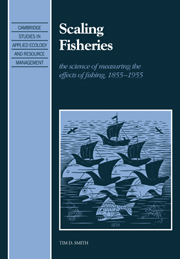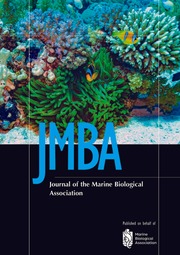Mismanagement of Marine Fisheries
Longhurst examines the proposition, central to fisheries science, that a fishery creates its own natural resource by the compensatory growth it induces in the fish, and that this is sustainable. His novel analysis of the reproductive ecology of bony fish of cooler seas offers some support for this, but a review of fisheries past and present confirms that sustainability is rarely achieved. The relatively open structure and strong variability of marine ecosystems is discussed in relation to the reliability of resources used by the industrial-level fishing that became globalised during the 20th century. This was associated with an extraordinary lack of regulation in most seas, and a widespread avoidance of regulation where it did exist. Sustained fisheries can only be expected where social conditions permit strict regulation and where politicians have no personal interest in outcomes despite current enthusiasm for ecosystem-based approaches or for transferable property rights.
- A critical analysis of global fishery regulations, with graphic examples of lack of compliance, providing the reader with possible reasons for the patterns of depleting fish stocks
- A biological analysis of the reproductive biology and growth pattern of teleost fish, provides evidence that these fish may be able to support long-term fisheries
- Proposes a method for sustainable fishery management for fisheries scientists, ecologists and natural resource managers
Reviews & endorsements
"A highly readable and insightful analysis of prominent failures in world fisheries management from an eminent marine scientist."
Peter Koeller, Bedford Institute of Oceanography, Dartmouth, N.S.
"This is great book that will challenge the cherished theories and beliefs of almost anyone working in the area of fisheries management. "Some of the shibboleths of the fisheries management and fisheries ecological communities he challenges include (1) fishing can be sustainable, (2) the basic assumptions of modern fisheries population dynamics models have any biological realism, (3) that the collapse of the Northern cod stock was simply overfishing and (4) except in the most extreme cases there is a relationship between spawning stock size and recruitment. "The book provides a valuable historical perspective on both marine ecosystems, and fisheries management. I highly recommend it to anyone interested in marine fisheries."
Professor Ray Hilborn, School of Aquatic and Fishery Sciences, University of Washington
"I say without hesitation this is a book that should be read by every scientist and, indeed every bureaucrat and person operating within the fishing industry and its associated sea-food industries.
Sidney Holt
Product details
June 2010Hardback
9780521896726
334 pages
235 × 159 × 20 mm
0.66kg
26 b/w illus.
Available
Table of Contents
- Preface
- 1. From certainty to doubt in fishery science
- 2. The ecological consequences of the extraordinary fecundity of teleosts
- 3. Indeterminate growth, negative senescence and longevity
- 4. Marine ecosystems: their structure and simulation
- 5. The natural variability of fish populations and fisheries
- 6. Has sustainability in fishing ever been achieved?
- 7. What is the real state of global fish populations?
- 8. The mechanics of fish population collapse
- 9. Why do some fish populations not recover after depletion?
- 10. Is the response of the fishery science community appropriate?
- 11. Conclusion: sustainability can be achieved rarely, and only under special conditions.








